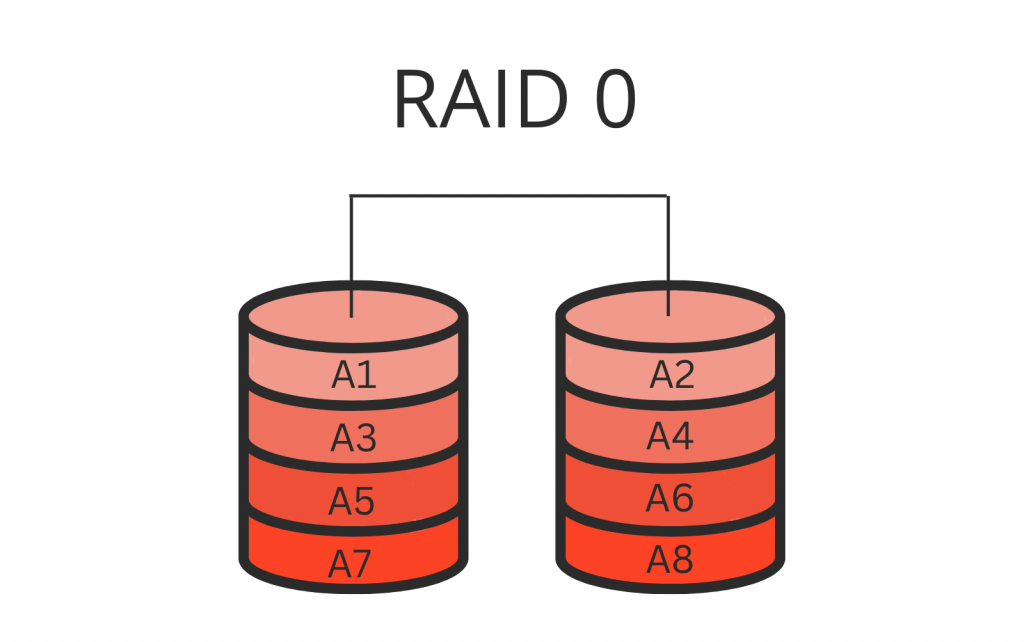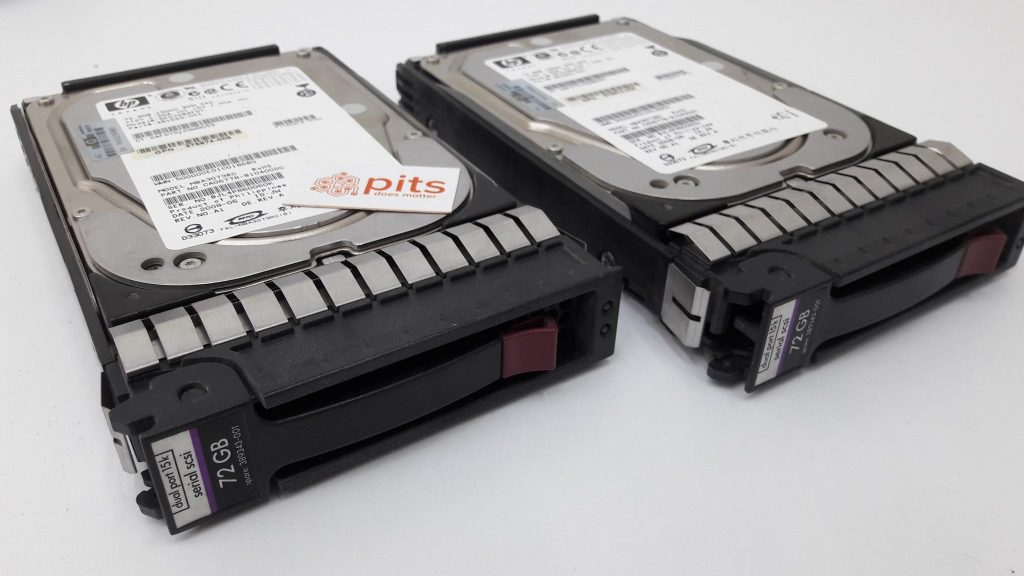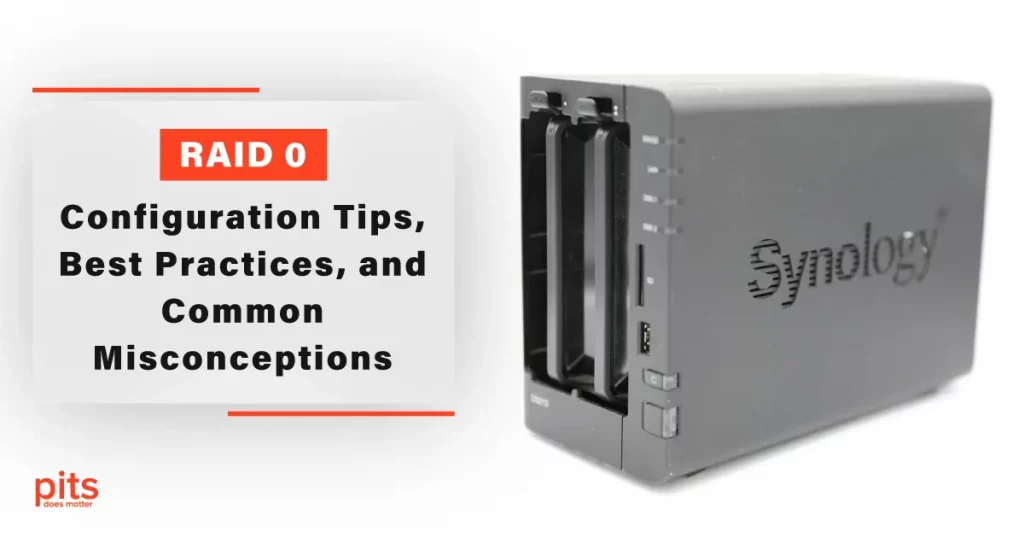In the world of data storage, RAID configurations play a crucial role in balancing performance, storage capacity, and data protection. Among these configurations, RAID 0 stands out as a high-performance option, although it lacks data redundancy. In this blog post, we will explore the fundamentals of RAID 0, discuss its advantages and disadvantages, provide best practices for configuring RAID 0, and address common misconceptions surrounding this storage system.
Understanding RAID 0
RAID, which stands for Redundant Arrays of Independent Disks, is a storage system that combines multiple disk drives into a single logical unit to enhance data storage and access performance. RAID 0 splits data across multiple drives, facilitating parallel read and write operations. Unlike other RAID levels that prioritize data redundancy, RAID 0 focuses primarily on delivering high performance.

Advantages of RAID 0
A popular RAID setup, RAID 0 has numerous benefits that can greatly enhance the performance and storage capacity of a system. Through the distribution of data across several drives, RAID 0 can offer enhanced speed and storage capacity for certain applications. Here are some advantages of RAID 0:
Increased Performance
RAID 0 distributes data across multiple disks in parallel, allowing for simultaneous read and write operations. This results in improved data transfer rates and overall system performance. By striping data across multiple drives, RAID 0 can significantly enhance data access and response times, making it ideal for tasks that require high-speed data processing, such as video editing or gaming.
Enhanced Storage Capacity
RAID 0 combines the storage capacity of multiple drives into a single logical volume. For example, if you have two 500GB drives in a RAID 0 configuration, you will have a total storage capacity of 1 TB. This makes RAID 0 an attractive option when you need large amounts of storage space for media files, databases, or other data-intensive applications.
Simple Implementation
Setting up RAID 0 is relatively straightforward compared to other RAID levels. It does not require any special hardware or complex configurations. Most modern operating systems and motherboards offer built-in support for RAID 0, making it easy to implement. This simplicity makes RAID 0 an accessible option for users who want to improve performance without investing in more advanced RAID configurations.
Cost-Effective
RAID 0 does not provide any redundancy or data protection features like other RAID levels. While this may be seen as a disadvantage in terms of data safety, it also means that RAID 0 does not require additional drives for mirroring or parity, resulting in lower hardware costs. If data redundancy is not a concern for your specific use case and you prioritize performance and storage capacity, RAID 0 offers a cost-effective solution.
Efficient Disk Utilization
RAID 0 evenly distributes data across all drives in the array, ensuring efficient utilization of disk space. This means that no single drive is filled up before others, preventing potential bottlenecks and maximizing the available storage capacity. As a result, you can make the most of your disk space and avoid wasted storage resources.
| Aspect | Advantages of RAID 0 |
|---|---|
| Performance | Increased performance with parallel data access |
| Storage Capacity | Enhanced storage capacity by combining drives' space |
| Implementation | Simple and easy setup; often supported by modern systems |
| Affordability | Cost-effective as it doesn't require additional drives |
| Disk Utilization | Efficient disk space utilization across all drives |
Disadvantages of RAID 0
Although RAID 0 can provide better performance and more storage capacity, it also has some drawbacks that need to be taken into account before deciding to implement it. It’s essential to weigh these drawbacks against the benefits to determine if RAID 0 is the right choice for your use case. Here are some disadvantages of RAID 0:
Lack of Data Redundancy
RAID 0 does not provide any data redundancy or fault tolerance. Unlike other RAID levels, where data is mirrored, or parity information is stored, RAID 0 simply strips data across multiple drives without redundancy. This means that if any drive in the array fails, all data stored on that drive is lost, and data recovery becomes extremely difficult or even impossible. The failure of a single drive can result in complete data loss for the entire RAID 0 array.

Increased Risk of Data Loss
Due to the lack of data redundancy, the risk of data loss in RAID 0 is significantly higher compared to other RAID configurations. Since there is no mechanism for data recovery within the array itself, a failure in any one drive can lead to irretrievable data loss. This is a critical consideration, particularly for valuable or irreplaceable data that requires high levels of data protection.
No Performance Improvement for Sequential Operations
While RAID 0 excels in improving random access and read/write speeds, it does not offer any performance improvement for sequential operations. If you frequently work with large sequential files, such as video rendering or large-scale data transfers, the performance benefits of RAID 0 may not be as pronounced in those scenarios.
Limited Reliability
As RAID 0 does not include any redundancy or fault tolerance, the reliability of the overall system is reduced. The failure of a single drive impacts the entire array, increasing the chances of system downtime and the need for data recovery or restoration. The absence of data redundancy also means that the mean time between failures (MTBF) of the entire array is essentially the MTBF of the individual drives, making the overall system less reliable.
Complex Retrieval Service
If a drive in a RAID 0 array fails, data recovery becomes a complex and challenging process. Since the data is distributed across multiple drives with no redundancy, specialized data recovery techniques and tools are often required to retrieve any salvageable data. The cost and time associated with professional data recovery services can be significantly higher in RAID 0 configurations compared to other RAID levels.
| Aspect | Disadvantages of RAID 0 |
|---|---|
| Data Redundancy | Lack of data redundancy and fault tolerance |
| Risk of Data Loss | Increased risk of data loss compared to other RAID types |
| Sequential Performance | No performance improvement for sequential operations |
| Reliability | Limited reliability due to the absence of redundancy |
| Data Recovery | Complex data recovery process in case of drive failure |
Best Practices for RAID 0 Configuration
To ensure optimal performance and minimize the risks associated with RAID 0, consider the following best practices:
- Select High-Quality Drives: Invest in reliable, high-performance drives to reduce the likelihood of failure. Regularly monitor drive health and promptly replace any failing drives.
- Implement Data Backup: Establish a robust backup strategy to safeguard against potential data loss, regularly back up the data stored in RAID 0 arrays to an external storage solution or a cloud-based service.
- Monitor and Set Alerts: Utilize monitoring tools to track the health and performance of your RAID 0 array. Configure alerts to promptly notify you of any potential issues or drive failures.
- Choose an Appropriate RAID Controller: Select a RAID controller that matches the performance requirements of your RAID 0 configuration. Ensure the controller has sufficient cache memory and supports the desired data transfer rates.
- Consider Stripe Size Alignment: The stripe size determines how data is distributed across the drives. Aligning its size with the type of data being stored can enhance overall performance.
Common Misconceptions about RAID 0
RAID 0 Provides Data Redundancy
This is a significant misconception about RAID 0. While it offers enhanced performance and increased storage capacity, RAID 0 does not provide any form of data redundancy. It is essential to recognize this limitation and implement appropriate backup measures.
RAID 0 Improves Drive Reliability
RAID 0 does not enhance the reliability of individual drives within the array. In fact, it can potentially increase the risk of drive failure due to the higher workload demands placed on each drive.
RAID 0 is Suitable for All Use Cases
RAID 0 is best suited for applications that prioritize performance over data redundancy. It is not recommended for critical systems or environments where data loss can have severe consequences.

RAID 0 offers high performance and increased storage capacity, but it comes with inherent risks due to the lack of data redundancy. Understanding the advantages and disadvantages of RAID 0 is crucial for making informed decisions about storage configurations.
By adhering to best practices, such as using high-quality drives, implementing data backups, and closely monitoring the array’s health, you can mitigate some of the risks associated with RAID 0. Remember that RAID 0 is not a one-size-fits-all solution and should be carefully evaluated based on the specific requirements of your applications and the importance of your data.
Benefits of Our Services for All RAID Levels
We provide comprehensive data recovery services for a wide range of RAID arrays, including RAID 0 configurations. Our team of experienced engineers is equipped with cutting-edge tools and techniques to successfully recover data from RAID 0 arrays, even in cases involving multiple drive failures or complex issues.
To initiate the RAID 0 data recovery process, we meticulously evaluate the damaged array. This thorough assessment allows us to identify the root cause of the data loss and devise an appropriate strategy tailored to the specific scenario. Our skilled engineers utilize a combination of specialized hardware repairs and manual techniques to effectively extract data from RAID 0 configurations.

If you’re facing a data loss situation, don’t hesitate to contact us. Our 24/7 data recovery services are available to you, 365 days a year. Let us help you recover your precious data today.

We start the recovery process with a risk-free evaluation. Our technicians estimate reasons for data loss and the level of damage. Based on it, we select the most suitable recovery strategy.

With years in the data recovery industry, our company supports the highest customer satisfaction rate. We do everything to provide a positive experience for our clients.

During our remote customer file verification session, you will thoroughly review all necessary documents and records to ensure accuracy and compliance.

We offer data recovery services from over 50 locations across the US. This means that no matter where you are located, you can access our services to recover the data.

With our certified data recovery services and 99% success rate, we are confident that we can recover your precious data and get you back up and running in no time.
We recognize the critical importance of time in the data recovery process, particularly for businesses and organizations heavily reliant on their data. That is why we offer emergency RAID data recovery services, promising remarkably quick turnaround times ranging from 8 to 48 hours. By minimizing downtime, we aim to swiftly restore our clients’ systems, enabling them to resume their operations with minimal disruption.
We recognize the distinctive nature of each data recovery situation. Our team of engineers adopts a personalized approach for every recovery project, ensuring the attainment of the most favourable outcome. Committed to delivering dependable and efficient RAID data recovery services, we prioritize exceptional customer service and maintain clear communication throughout the entire recovery process.
Frequently Asked Questions
What is RAID 0?
RAID 0 is a storage configuration that distributes data across multiple drives to improve performance. It does not provide data redundancy like other RAID levels.
What are the advantages of RAID 0?
RAID 0 offers high performance, as data can be read from and written to multiple drives simultaneously. It also increases storage capacity by combining the capacities of the individual drives in the array.
Is RAID 0 fault-tolerant?
No, RAID 0 does not offer fault tolerance. If one drive in the array fails, the entire array becomes inaccessible, potentially leading to data loss. It is recommended to regularly backup data stored in RAID 0 arrays.
Can I add more drives to a RAID 0 array?
Yes, you can add more drives to a RAID 0 array to increase its storage capacity. However, keep in mind that all drives in the array must have the same capacity and that the array’s performance will depend on the slowest drive in the array.
Is RAID 0 suitable for data protection?
No, RAID 0 is not suitable for data protection. Its primary focus is on performance rather than data redundancy. If data protection is a priority, it is recommended to consider other RAID configurations, such as RAID 1 or RAID 5, which provide data redundancy.
